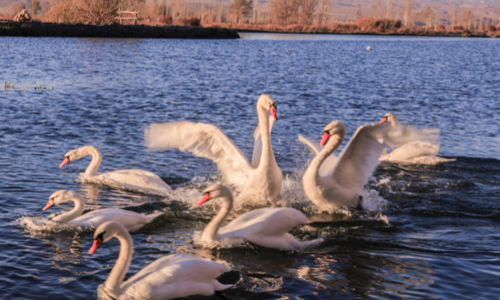ARTS / MUSIC
Local government turns Xinjiang's Ili River Valley into swan heaven

Swans Photo: IC
Editor's Note:With China as the country of presidency, the second phase of the 15th meeting of the Conference of the Parties to the UN Convention on Biological Diversity (COP15) is being held in Montreal, Canada.
This series will show the various animals and plants in China that thrive as a result of the country's efforts in biodiversity conservation and building up sustainability.
Over the past seven years of Kekedala's fast development, this river valley city, located in Northwest China's Xinjiang Uygur Autonomous Region, has become a new home for swans.
Kekedala, part of the Fourth Division of the Xinjiang Production and Construction Corps, is a young city established in 2015 with the approval of the State Council of China.
As the youngest city along China's northern border, Kekedala was built out of a vast grassland and developed into a dynamic area with high buildings, advanced transportation, and prosperous businesses.
Kekedala's geographical advantages include being adjacent to both land ports of Horgos, an important hub for Chinese and Central Asian rail freight to Europe, and the Durata Port in Chabuchaer county.
But more importantly, ecological protection was another focus during the construction of Kekedala. The city is located next to the Ili River Valley, which has the largest landlocked river in the world. The local government of Kekedala has been investing in wetland protection and restoration in order to build a green and ecological city.
According to the data obtained from China's Ministry of Ecology and Environment (MEE), to date the city center of Kekedala has a green space coverage of over 19,200 mu (12.8 square kilometers), with 29 ecological parks built across the city. Its lush forests and green spaces provide excellent conditions for wild birds to live and breed.
At the southern suburb of the city is a 3.8-hectare natural lake, a perfect habitat for many wild birds.
As the local government keeps improving facilities around the lake, the number of birds in Kekedala has reached nearly 100.
MEE's data shows that over 140 wild bird species live here in this northern Xinjiang city.



